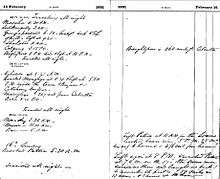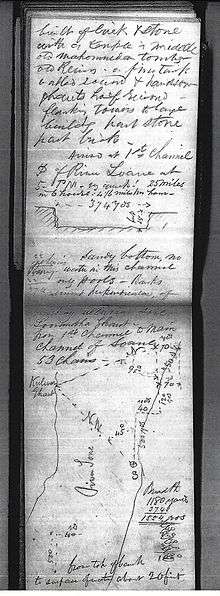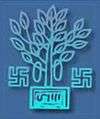Koilwar Bridge
| Koilwar Bridge | |
|---|---|
| Coordinates | 25°33′57″N 84°47′54″E / 25.5658°N 84.7982°E |
| Carries | Kolkata-Delhi Main line + NH 30 |
| Crosses | River Sone |
| Locale | Koilwar, |
| Official name | Abdul Bari Bridge |
| Characteristics | |
| Design | Lattice girder |
| Material | Concrete & steel |
| Total length | 4,726 feet (1,440 m) |
| History | |
| Opened | 1862 |
| Statistics | |
| Daily traffic | rail and road |
The Koilwar Bridge, now named Abdul Bari Bridge, at Koilwar spans the River Sone. The bridge was named after Professor Abdul Bari, academic and social reformer.
The steel lattice-girder Koilwar Bridge (known as Sone Bridge when it was built) was the longest bridge in the subcontinent when built: construction started in 1856, disrupted by uprisings in 1857, and completed in 1862. A two-lane road (NH 30) runs under the twin rail tracks.
The bridge was inaugurated by the Viceroy Lord Elgin, who said, “... this magnificent bridge is exceeded in magnitude by only one bridge in the world”. The bridge was designed by James Meadows Rendell and Sir Matthew Digby Wyatt. It remained the longest bridge in the Indian subcontinent till it was overtaken by the Upper Sone Bridge in 1900.[1][2]
The bridge is shown in the film Gandhi.
History


An initial survey of the bridge site was made on 17 February 1851[4] by George Turnbull, Chief Engineer of the East Indian Railway Company: he determined that the river then was 5,350 feet (1,630 m) feet across — the completed bridge was 5,280 feet (1,610 m) feet across. He settled on the site near Pures "where the banks are well defined, and the channel had evidently for ages been confined within certain limits, proved by the existence of old Hindoo temples, far before the Mohammaden works at Muneer, built about 200 years [before 1851]."[3]
By November 1859, both abutments and 16 of the 26 piers were being built and the well-sinking for the remaining piers progressing. By 21 December 1860, three of the iron spans were in place; 4572 tons of the estimated 5683 final tons of iron-work for the bridge had arrived from England.[5]
George Turnbull inspected the bridge and judged it complete on 4 November 1862.[3][6] On 11, 12 and 13 December 1862, "a set of experiments with couple engines, testing the Keeul, Hullohur and Soane bridges, with an assembly of Government engineers, and our railing engineers; all very satisfactory." [3][7] On 5 February 1863, a special train from Howrah took Turnbull, the Viceroy Lord Elgin, Lt Governor Sir Cecil Beadon and others over two days to Benares: they alighted at the bridge and inspected it.[8] In Benares there was a durbar on 7 February to celebrate the building of the railway and particularly the bridging of the Sone, the largest tributary of the Ganges.[3]
Sand erosion near the pillars of this old bridge has created structural problems recently.[9]
New bridge
A four-lane road bridge, carrying NH 30, parallel to the existing rail and road Koilwar Bridge, has been planned.[10]
See also
-
 Bridges portal
Bridges portal -
 Bihar portal
Bihar portal - List of longest bridges
- List of longest bridges above water in India
References
- ↑ "Bridges: The Spectacular Feat of Indian Railways" (pdf). National Informatics Centre. Retrieved 2011-07-05.
- ↑ "Indian Railway History Timeline". Retrieved 2011-07-06.
- 1 2 3 4 5 6 Diaries of George Turnbull (Chief Engineer, East Indian Railway Company) held at the Centre of South Asian Studies at Cambridge University, England
- ↑ George Turnbull, C.E. Page 108 of the 437-page memoirs published privately 1893, scanned copy held in the British Library, London on compact disk since 2007
- ↑ The Early History of the East Indian Railway (pages 136-137) Hena Mukherjee, first published 1994 by Firma Private Limited, Calcutta
- ↑ George Turnbull, C.E. Page 198 of the 437-page memoirs published privately 1893, scanned copy held in the British Library, London on compact disk since 2007
- ↑ George Turnbull, C.E. Page 199 of the 437-page memoirs published privately 1993, scanned copy held in the British Library, London on compact disk since 2007
- ↑ Page 35 of History of the East Indian Railway by George Huddleston 1906.
- ↑ "Koelwar Bridge, Bihar, India". Bihar. indian railway. Archived from the original on April 9, 2010. Retrieved 2009-03-10.
- ↑ "Four-lane connector over Sone, Ganga". The Telegraph, 8 April 2011. Retrieved 25 June 2011.
External links
|
| |
|
|